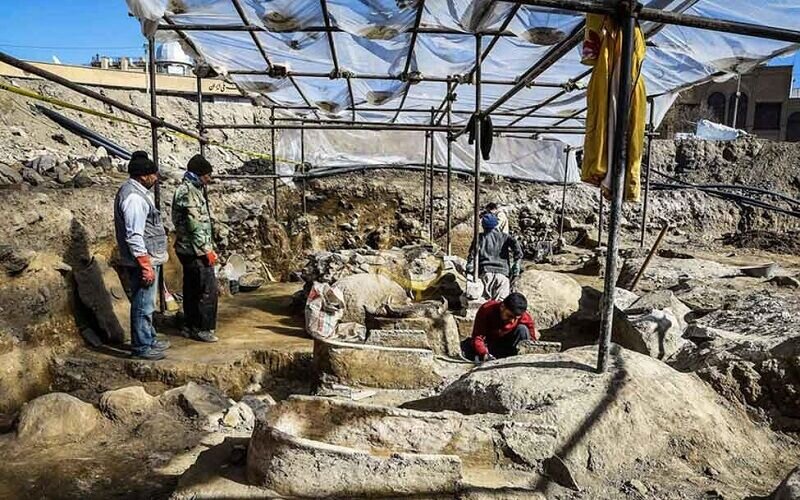Archaeologists in search for Seleucid relics in Laodicea Temple

TEHRAN – A new round of archaeological exploration has been commenced at the enigmatic Laodicea Temple in the city of Nahavand, west-central Hamedan province with the aim of finding the Seleucid era (312 BC-63 BC) relics.
The project also aims at solving the problems of the residents of the districts near the site, who haven’t been allowed to construct buildings for over 50 years, ISNA quoted provincial tourism chief Mohsen Janjan as saying on Wednesday.
Previous excavations uncovered capital column heads, their shafts, and bases as well as striking pieces of engraved pottery, yet the archaeologists believe that the core an ancient Greek temple is buried beneath many residential units built by the locals on the site over the years.
In 1943, archaeologists discovered an 85x36 centimeter ancient inscription of 30 lines written in Greek calling on the people of Nahavand to obey the laws of the government. The inscription indicated the existence of the Laodicea Temple, which had been built by the Seleucid king who ruled Asia Minor, Antiochus III the Great (223-187 BC), for his wife Queen Laodicea.
Two other inscriptions as well as four bronze statuettes have been unearthed at the site, which are on display in the National Museum of Iran in Tehran. A number of capitals and bases of the temple’s columns excavated over the years are currently being used as decorations in Nahavand’s Hajian Bazaar and several other parts of the city.
Antiochus was the most distinguished of the Seleucids. Having made vassal states out of Parthia in present-day northeastern Iran and Bactria (an ancient country in Central Asia), he warred successfully against the Egyptian king Ptolemy V and in 198 BC obtained possession of all of Palestine and Lebanon.
He later became involved in a conflict with the Romans, who defeated him at Thermopylae in 191 BC and at Magnesia (now Manisa, Turkey) in 190 BC. As the price of peace, he was forced to surrender all his dominions west of the Taurus Mountains and to pay costly tribute. Antiochus, who early in his reign had restored the Seleucid Empire, finally forfeited its influence in the eastern Mediterranean by his failure to recognize the rising power of Rome.
The Seleucid Empire was a Hellenistic state ruled by the Seleucid dynasty which existed from 312 BC to 63 BC; Seleucus I Nicator founded it following the division of the Macedonian Empire vastly expanded by Alexander the Great. Seleucus received Babylonia (321 BC) and from there expanded his dominions to include much of Alexander's near-eastern territories. At the height of its power, the Empire included central Anatolia, Persia, the Levant, Mesopotamia, and what is now Kuwait, Afghanistan, and parts of Pakistan and Turkmenistan.
ABU/MG
Leave a Comment